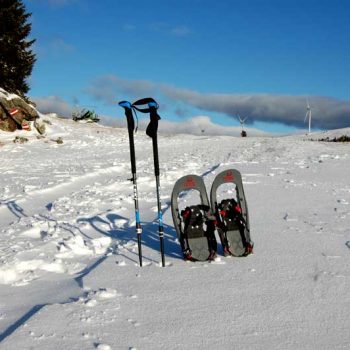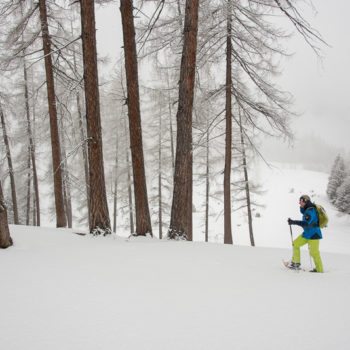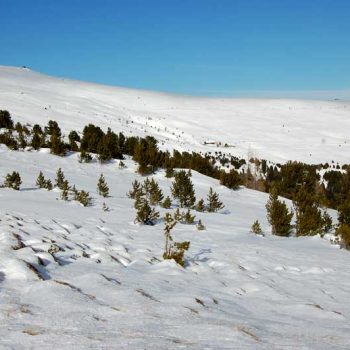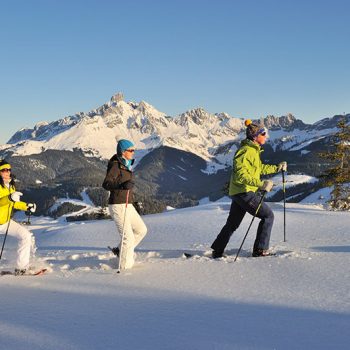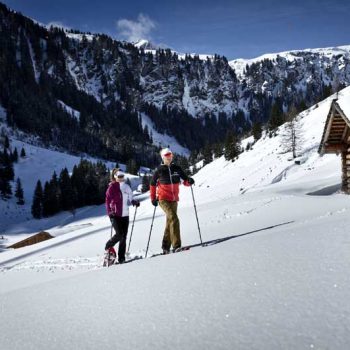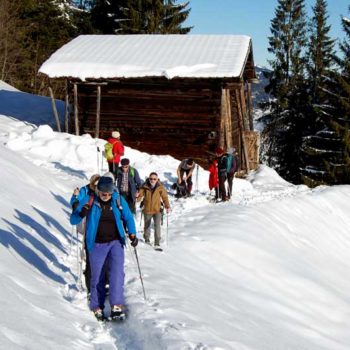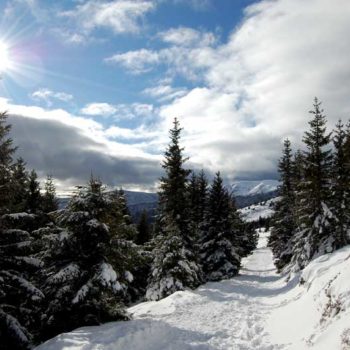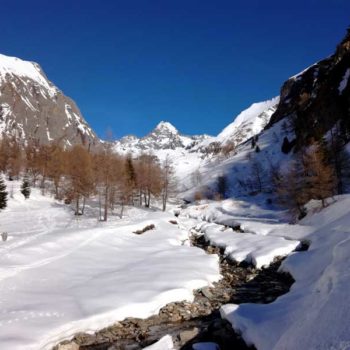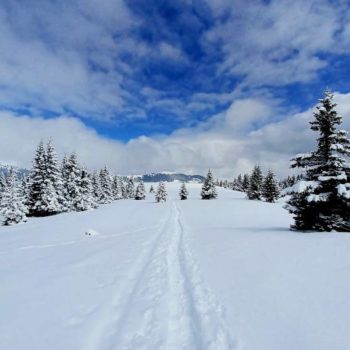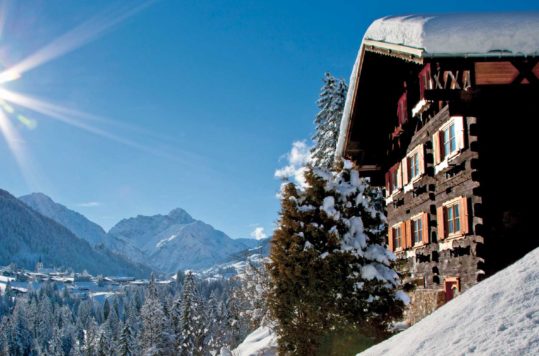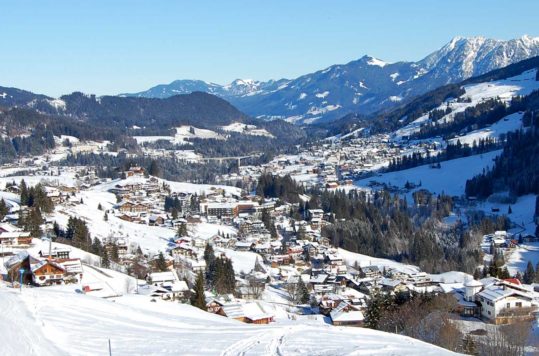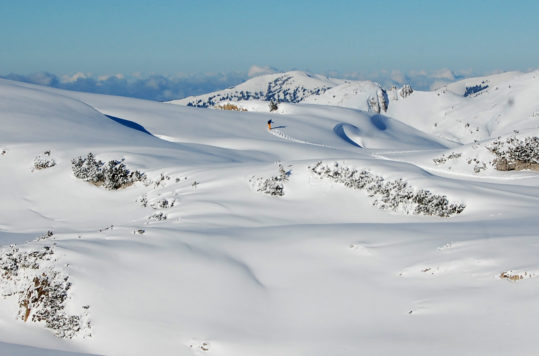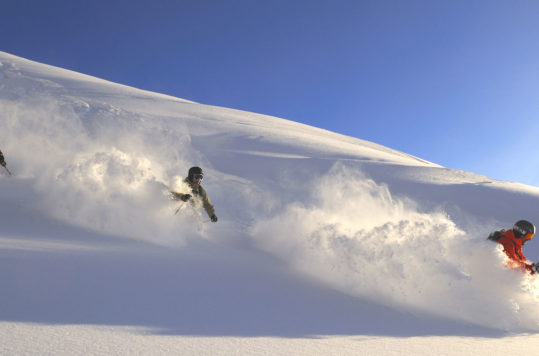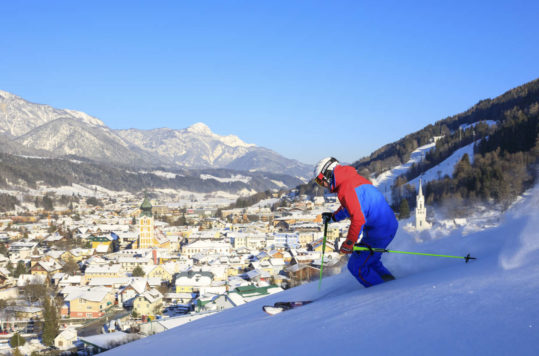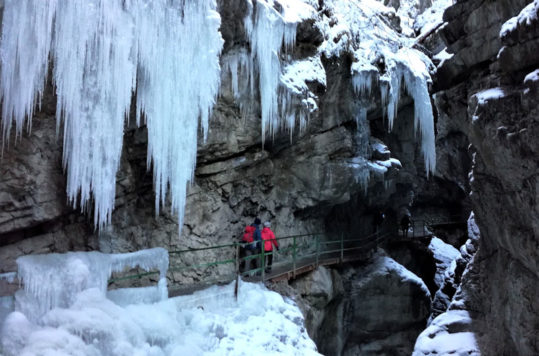Snowshoe hiking is gaining popularity, and you often see the unmistakable tracks across the snow in the Austrian Alps.
Often you only reach pristine snow-covered places by snowshoes. Snowshoes are ideal for exploring the enchanting winter landscape and also perfect for slowing down the pace of your vacation and enjoying the fresh air. Find a quiet corner in the woods or the mountains without ski lifts and resorts. Take a break from the hectic atmosphere in the ski resorts and put on your snowshoes.
Guided snowshoe tours
If you have just started snowshoeing, we recommend joining guided snowshoe tours. You can pick up tips for both snowshoeing techniques and great hiking routes from your guides. Check the website of the local tourist office to see if they offer guided snowshoe hikes. If you hike with a guide, you will not only learn about snowshoeing, but you can also learn a lot about the nature and culture of the region. The local known guides are usually wandering “Wikipedias” regarding their area, activities and, not least, which mountain huts have the best food.
Hiking on your own
Snowshoe hiking requires very little preparation. Check out a map and local snow conditions and plan your trip. Suppose you prefer to hike on your own or with a few friends. You can virtually do this wherever you find more than 25 cm / 10 inches of snow. I like to hike in a terrain that offers both forests and open areas and alternates between flat and hilly. I always bring a backpack with food and a hot drink to enjoy a break in the wilderness.
< Click on the images to enlarge >
Lightweight equipment
Whether you use a car, bus or train, getting out into the wintery nature for a snowshoe trip is easy. Modern snowshoes are lightweight and handy and can be strapped to the outside of your backpack. Moreover, the poles are contractable, making them easy to transport. You don’t need ski lifts or marked trails for a snowshoe hike. A minimum of 20 cm of snow on the ground is enough for a hike. Always check the avalanche warnings if you plan to hike in steep terrain or traverse below open mountainsides. Get info about the local snow conditions by talking to the reception at your hotel or the local tourist office before heading out. You can also opt for a guided snowshoe hike, especially if you are new to the area.
ADVERTISEMENT
The Big Five of the Alps
If you go on a snowshoe hike in East Tyrol (Osttirol) with a national park ranger, you may spot one of the “Big Five of the Alps”: Ibex, golden eagle, ptarmigan, chamois, and bearded vulture. Although they are rarely seen during the cold season, the ranger knows where and when you can best meet these shy animals in the Hohe Tauern National Park.
Traditional mountain huts
It is rarely far between the traditional mountain huts in Austria that serve food and drink. Whether you are on an overnight or a day trip, finding a hut or more in the area you are going for snowshoe hiking is a good idea. It is nice to settle inside the warm hut with good food and hot drinks. The vast majority of mountain huts in Austria serve good home cooking, such as Schopfbraten (pork roast), Kaiserschmarrn (dessert), or Griesnockerlsuppe (broth with semolina dumplings).
Useful links
Lawine info Österreich (Here you will find snow avalanche warning. Most are in German, but some states also have info in English)
Snowshoe trails in Austria (Suggestions for snowshoeing in Austria from outdooractive.com)

